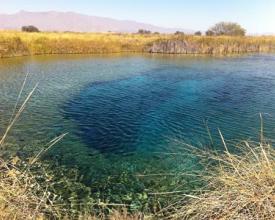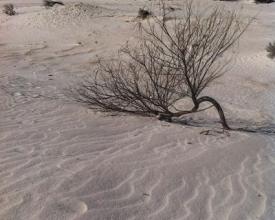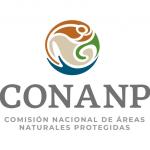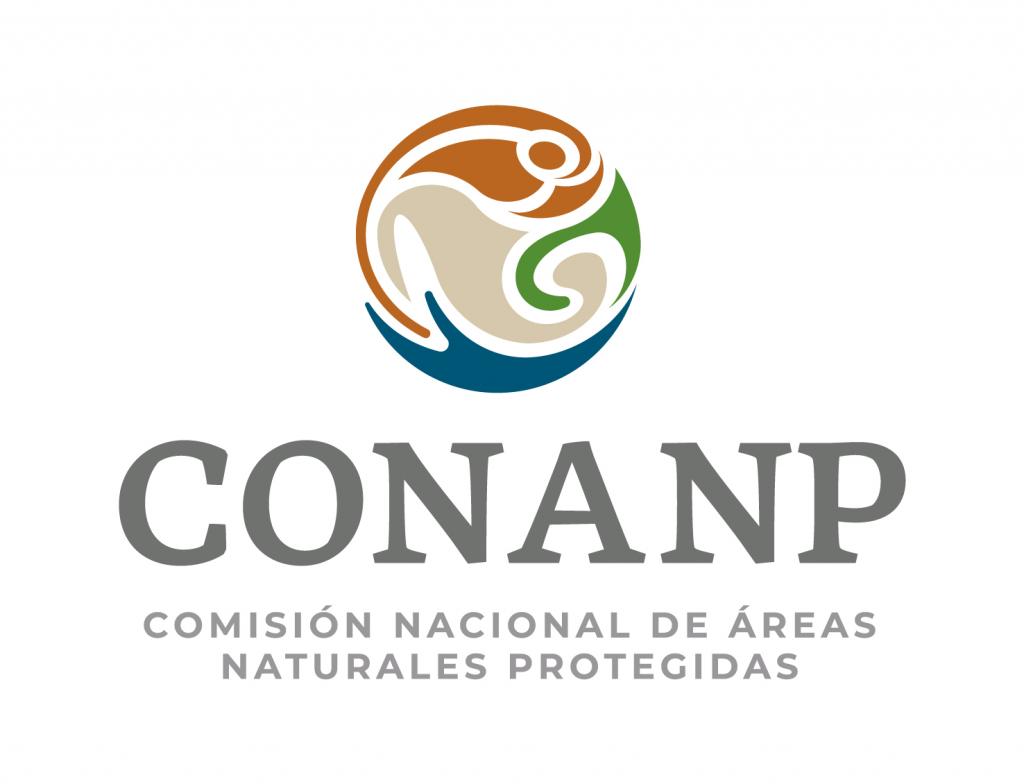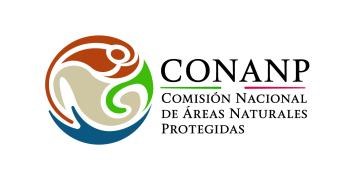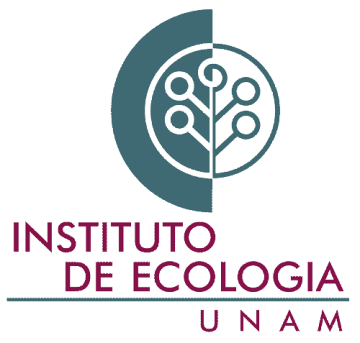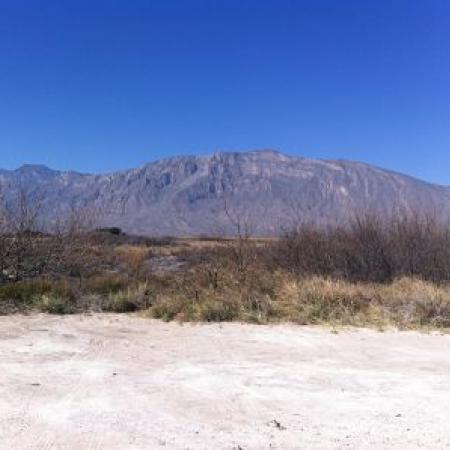
Cuatrociénegas: Restoring the resilience of a unique ecosystem
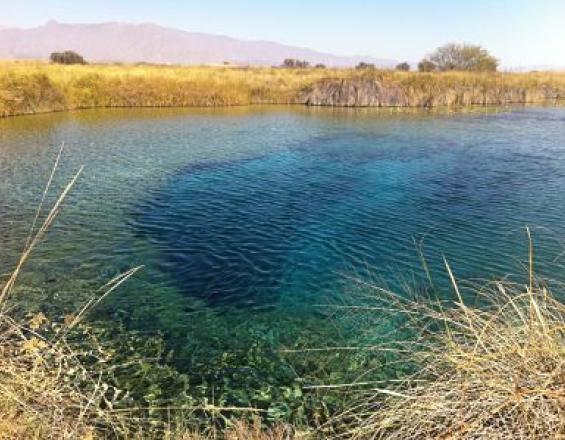
Cuatrociénegas is a unique desert-wetland protected area. It hosts agricultural and cattle-raising activities, which consume large amounts of water. In a climate change context of fluctuating precipitation patterns, it is crucial to develop adaptation alternatives. CONANP has spearheaded these efforts. It has set up alliances to substitute water-guzzling plant species, monitor water quantity and quality, and promote innovative farming practices.
Contexto
Défis à relever
- The wetlands in this desert region are not rain-fed, but they rely on water from local aquifers;
- water is being diverted from local aquifers to be used in the production of alfafa and other fodder for cattle-raising;
- invasive species of trees and reeds have been identified as major consumers of water in the reserve;
- a significant segment of the local producers are resistant to change;
- the reserve is affected by productive activities outside its borders.
Ubicación
Procesar
Resumen del proceso
Building Blocks II (experimentation within the reserve, to shift from water-guzzling alfafa to nopal production) and III (developing a bio-digestor that can convert nopal to palatable fodder) provide the practical guidance and data needed to overcome fear of adaptation that bedevils the successful implementation of Building Block I (Multi-pronged, integrated, water demand management). Building Block II provides the nopal necessary for the use of the bio-digestor in Building Block III. The success of the bio-digestor in the latter building block will make it easier for the adoption of nopal production, and nopal-based fodder in the reserve, and outside it.
Bloques de construcción
Integrated Water Demand Management
Water demand reduction has occurred through: a) identifying and removing invasive, water-guzzling tree and reed species (such as carrizo, pinabete, and the pino salado); b) removal of some irrigation channels; and c) the setting up of a monitoring system for water quantity and quality in the Protected Area. A further major contribution is represented by the efforts to encourage the adaptation of agricultural and cattle-raising practices, centered around migrating from alfafa production to nopal. The nopal needs a tenth of the water that alfafa requires to grow, and can be used for human consumption, and as a substitute for cattle fodder.
Factores facilitadores
a) Knowledge and data on water use by different components of the socio-ecological system in the protected area;
b) monitoring systems;
c) awareness-raising about the importance of preserving the ecosystem for maintaining community benefits;
d) economic and human resources to be able to carry out the labor-intensive rehabilitation work;
e) innovation-friendly local producers who are willing to be the first ones to modify their practices.
Lección aprendida
a) The restoration of the wetlands has been and continues to be a race against time. Restoration efforts seeming to be always one step behind the socio-economic pressures that are causing the continued water extraction.
b) The challenges of restoring water levels in the wetlands are not only economic and physical, but also social and psychological in nature. Much work also has to be focused on convincing producers to adapt practices in the face of lack of knowledge and change aversion.
c) Without accurate scientific guidance and data on water consumption, it is not possible to carry out effective integrated water demand management.
d) It is very important that all governmental actors working in and around the PA work together and synergistically.
e) Future work should focus on developing an alliance of government actors to reduce the socio-economic pressures on water extraction in the reserve
Experimenting new methods, ideas, and approaches in limited area
It is crucial to experiment with new management ideas in a controlled manner, to ensure that adaptation measures will work as expected, and replicate them. In the context of integrated water demand management, and with the objective of adapting to climate change by supporting local producers to shift from alfafa production to that of nopal for human consumption and cattle fodder purposes, CONANP has set up a six hectare experimental site to a) find out how well such an adaptation might work out in practice for the producers (and their cattle), and b) to use the site as a demonstration of how a successful adaptation to this production strategy can work for other producers in the PA. If the experimental area is successful, it will be easier to spread this adaptation measures among other producers and areas of the PA. The experimental site can provide reliable scientific guidance and the data needed to support adaptation decisions, in times when lack of knowledge and change aversion can prevent the implementation of this type of adaptation measures.
Factores facilitadores
a) Local producers who are willing to be forerunners and modify their practices in an experimental trial;
b) Willingness of the PA’s staff to invest (time, money and effort) on innovative, but potentially unsuccessful, experimentation;
c) Technical understanding of materials needed to create the growing tunnels under which the nopal grows;
d) Monitoring and evaluation to assess the experiment, and to be able to make technical adaptations where necessary.
Lección aprendida
a) High quality technical support to producers is essential in order to reduce the slope of the learning curve for the local producers;
b) Many lessons have been learned with respect to the technical aspects related to the use of materials for tunnels. Special mobile growing tunnels have now been developed to respond to changes in weather conditions related to temperature and winds, and to allow producers to move or remove the tunnels when necessary;
c) Communicating the results of the experiment is very important to promote producers’ buy-in. A critical mass of convinced producers is needed to open up commercially viable markets for new products (i.e. nopal for cattle fodder & human consumption);
d) Calculating risks and forming strategic alliances (producers, government and non-state actors) are crucial factors for a successful implementation.
Combining approaches: EbA and new technologies
The experimentation with nopal is not the only type of experiments being undertaken in the reserve. Working under CONANP leadership, students and teachers from a local high school (CBTa-22) are adapting an innovative bio-digestor, to convert nopal into high-grade fodder for the cattle and milk industries outside the reserve. The goal is to replace the water-guzzling alfafa-based fodder with nopal-based fodder to reduce the water demand pressure on the wetlands from sources outside the PA, as well as within it. The building block demonstrates the potential that reserves have to act as agents of adaptation beyond their own boundaries. The design of the bio-digestor was made by Universidad Autónoma de Chapingo; the CBTa-22 students are experimenting with it and a mix of urea and nopal needed to increase the quality of the fodder. The nopal needed for the bio-digestor has come from the experimental sites set up as part of Building Block II. First results of the bio-digestor created a sludge that was unpalatable for the cattle. Since then, they have been working on combining the sludge with other types of fodder, and on developing pellets more palatable to the cows.
Factores facilitadores
a) CONANP as a facilitator and promotor of the bio-digestor experiment;
b) Alliance formation between government, producers and technical colleges and universities;
c) Local producers who are willing to provide cattle as tasters for the fodder produced by the bio-digestor;
d) Teachers and student driving forward the research and experimentation over a number of years (six years, to date)
e) Good technical understanding of bio-digestor development.
Lección aprendida
a) Experimental, technical innovations require a commitment of resources. Being able to make alliances with a technical college can provide the necessary resources to maintain the innovation process over time;
b) CONANP as an intermediary between the bio-digestor developers and the cattle producers, is invaluable especially when volunteer producers are needed to provide cattle that will test out the fodder.
c) This building block demonstrates that PA staff can be a key agent of adaptation outside its own boundaries, so as to reduce pressures on itself.
d) In the specific case of Cuatrociénegas, it is a salutary lesson for other PAs that the area is investing its own resources (as well as that of the local college CBTa-22) to come up with innovative solutions for fodder production and water demand management (experimented on within its own boundaries), for adoption by businesses outside its boundaries.
Impactos
- Reducing the demand for water has allowed a large number of waterbodies in the wetlands to recover healthy levels;
- An increase in waterlevels in such bodies has supported the conservation of the “bizagra” turtle, as well as the famous stromatolites of this protected area (PA). Cuatrociénegas is one of only two places in the world in which these ancient creatures still dwell;
- By shifting from the production of alfafa to the production of “nopal” (a type of cactus) for human consumption or cattle fodder, farmers have been able to save time, water and energy; d) the control of invasive species such as the “pinabete” tree, the desert pine and the “carrizo” reeds, which consume high levels of water, has reduced pressure on hydrological resources in the PA.
- The aforementioned actions have contributed to maintain valuable ecosystem services that are fundamental to adapt to climate change impacts.
Beneficiarios
- Local human populations benefiting from the conservation of ecosystem services from the wetlands;
- local wetland ecosystems, including native fish species and stromatolites;
- producers;
- cattle ranchers (nopal-based forrage).
Objetivos de Desarrollo Sostenible
Historia

Cuatrociénegas is a unique wetland in the desert. It hosts rare prehistoric microbial forms of life named stromatolites. The region, including the protected area (PA), is extensively used for agricultural and cattle-raising activities. Therefore, over the last century an increasing number of irrigation channels have been opened in this region. These channels draw water from the wetland water bodies (“pozas”) to productive land parcels, to such an extent that aquifers are rapidly dwindling, causing desiccation of the wetland and an increase of ecosystem degradation. These tendencies are exacerbated by climate change impacts including erratic rainfall patterns and water scarcity. Aware of the aforementioned challenges, the National Commission of Protected Areas (CONANP) has sought to reverse these trends by promoting the responsible use of water by agricultural and cattle-raising producers. CONANP is working with a coalition of stakeholders such as researchers, NGOs, local communities, schools, and young adults. The coalition is being built and operationalized through awareness-raising activities, special annual events, and capacity-development workshops. Moreover, the hydrological restoration of the wetland ecosystem is being carried out by a) removing invasive, water-guzzling tree and reed species; b) introducing a fishing and swimming exclusion zone in the “pozas”; c) improving community management of fire risks; d) removal of some irrigation channels, and d) setting up a monitoring system for water quantity and quality in the protected area. One of the short-term, tangible benefits has been the recuperation of local species of turtles and fishes. Another effort has been the promotion of different agricultural and cattle-raising practices, through migrating from alfafa production to nopal. The nopal needs a tenth of the water that alfafa requires to grow, and can be used for human consumption. Moreover, it can be a substitute forrage material for cattle. Experiments are taking place now adding up to six hectares of land, which translates into a saving of 200,000 m3 of water per year. In addition, students and teachers from a local high school (CBTa 22), coordinated by CONANP, are adapting an innovative bio-digestor (developed by Universidad Autónoma de Chapingo) to convert nopal into high-grade fodder for the industrial cattle-raising and milk industries in the region.

